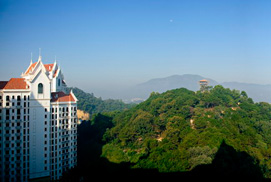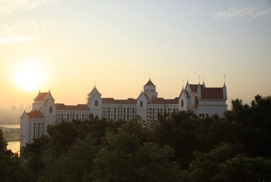概念的来源
休闲设计不是常规意义中的建筑风格,而是对于我们日益改变不断进步的世界的一种建筑表现形式。休闲设计涵盖了从情趣、怪异到高雅、富丽堂皇等所有的风格。如果有必要,它可以有选择地从其它风格中借用所需的元素。休闲风格建筑表达的是不同时代的同一种态度:一种人们追求至高无上的哲理。它意味着从现实的喧嚣中脱离开来并致力于实现人的自由和自我完善。
休闲设计是为了满足现代人类日益增长的品位和需求。在世界工业化和现代化程度不断提高的今天,新生代人类正在承受着污染、拥挤和高强度的工作压力。当工作需要人们付出更多的时间和精力,休闲就显得更加珍贵,人们最大限度地利用闲暇时光来充电放松也就变得越来越重要。
休闲设计致力于探索人们心灵深处的需求,满足一种对新的体验的渴望,进而亲近大自然。在现实生活中,回归自然就像是去圣地朝圣一样,似乎只有在梦中才能够实现的珍贵所在。
Origins of a Concept
Leisure design style is not a classified style per se, as much as it is an architectural response to the evolving dynamics of our ever-changing modern world. It can range from the playful and whimsical to the refined and stately. It can eclectically borrow elements from other styles as needed. Leisure style architecture expresses an attitude whose time has come; a philosophy of man's aspirations as supreme. It embodies a departure from mere existence and a freedom from the mundane to pursue that which fulfills us as human beings and makes us complete. Leisure design style evolved from the need to accommodate the increasingly sophisticated tastes and requirements of the modern age man. As our world continues to industrialize and modernize, an ever-growing population is suffering from the effects of pollution, overcrowding, and work-related stress. As work requirements demand a greater amount of time and energy from the average person, free time becomes a much more valuable commodity and taking advantage of it to its maximum benefit becomes a much greater priority. Leisure design style recognizes that we are searching for a deeper understanding of ourselves, a yearning for new experiences, and a reconnection with the natural. A return to nature becomes akin to a sought-after pilgrimage to a sacred place that now seems to exist mostly in dreams.
  |
